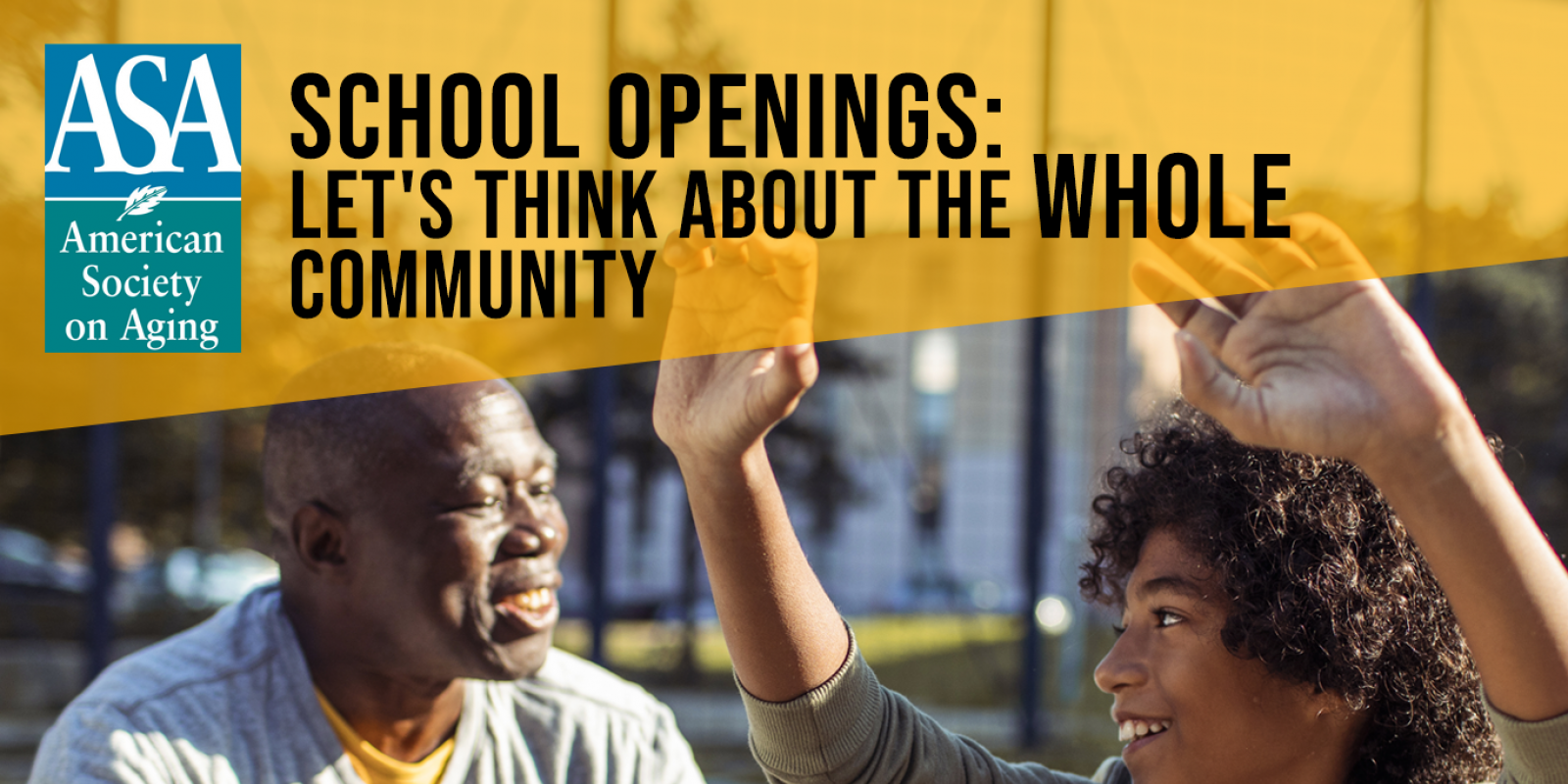This fall is becoming increasingly fraught for parents and students as COVID-19 rates rise in multiple states across the country. Daycare facilities are closing at a rapid clip, elementary, middle and high schools are following as many protocols as there are counties in this country, and many colleges in mid-July were weighing options, hoping against hope to retain those critical tuition dollars.
As members of communities that are struggling with school reopenings, you are a critical voice for all the older adults you serve. Tell your superintendents and elected officials that older adults must be considered when reopening schools.
Generally, professionals in the aging sector do not interact on a regular basis with local school officials. There are plenty of programs supporting intergenerational volunteerism in the schools, for example, but our membership needs to get more involved in school administration decisions—and now is the time.
With the absence of federal leadership, you are the advocates for older adults in your communities. Urge state and local leaders to consider the impact of reopening too soon on not just students, but also on older teachers, administrators, staff and on family caregivers. Yes, children are missing out on important socialization and learning opportunities, teenagers are becoming more at risk for social and emotional challenges and college kids will have a non-college experience, perhaps for as long as a year. But as other countries, like Israel, are attributing COVID-19 increases to premature school openings, leaders need to pay close attention to the fears, risks and needs of older populations when planning for opening schools.
We know that older adults, particularly those with co-morbidities or compromised immune systems, are vulnerable to COVID-19. When reopening schools, we must consider teachers, 18 percent of whom are older than age 65, and the 27 percent of principals who fall into this category. In many states like California, Maine and Vermont, teachers nearing retirement age make up one in five, if not one in four of those being asked to teach in a closed room with virus carriers. In Florida, about a third of children have tested positive for COVID-19.
And although there are no specific statistics regarding the number of school employees who are caregivers, if we know that 16.8 percent of American adults are providing care for someone older than age 50, we could extrapolate that about every sixth school employee is caring for an older adult at home, and would have to take many extra precautions upon returning to that job.
The trickle-down effect of lower school openings this fall also ropes in any relatives of non-teaching school staff such as learning specialists, teacher aides, coaches, bus drivers, custodians, cafeteria workers and school nurses. These workers make up half of school staff, all of whom would go back to their communities with possible COVID-19 infections they may have picked up at school.
At universities a whopping 37 percent of college professors are older than age 55. We know most human brains aren’t able to make proper judgment decisions prior to age 25, so are we really willing to let well-meaning college kids who failed to socially distance (yet alone wear masks), mingle with the almost 40 percent of professors heading toward age 60?
Just two weeks ago University of California at Berkeley announced it would rethink its plans to reopen in the fall due to a surge in coronavirus cases linked to fraternity parties. This was in July—school isn’t even in session.
One in 10 students enrolled in college is caring for an older adult. With this population, online learning makes perfect sense and would protect the possibly immunocompromised older adults for whom they provide care.
At the other end of the age spectrum, how about we consider the 64 million Americans who live in multigenerational households—meaning kids, parents and grandparents all sharing possibly tight quarters? Any parent is intimately familiar with the number of viruses passed around during a kids’ life, from daycare through high school, so what’s to prevent the children from multigenerational homes from bringing COVID-19 back to their grandparents?
Multigenerational living in America happens to be more prevalent in communities already at higher risk of contracting COVID, such as Asian (29 percent), Latinx (27 percent), Black (27 percent) and foreign-born American households (44 percent).
We are not suggesting that all older adults are vulnerable, quite the contrary. Many are volunteering and donating like never before during the pandemic and those on the younger end of the demographic are busy shopping and tending to much older neighbors in great numbers. Older adults need as much social interaction as do younger adults, and scads have become expert at Zoom parties and volunteering as advocates online.
But we are strongly encouraging leaders to consider and listen to all the individuals that make up the educational ecosystem. While leaders turned wearing masks into a political issue that ultimately has seen record cases of COVID-19 infections, there is still time to prevent the reopening of our schools from seeing the same consequences.
Peter Kaldes is President and CEO of the American Society on Aging.













